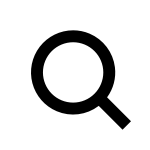The Belgian ZERO artist Jef Verheyen (1932-1984) became known as the painter of light streams and colour spectra. He experimented not only with light, but also with movement and the invisible as means to evoke natural mechanisms and to reveal universal interrelationships between human beings and the surrounding world. He used geometric principles – his passion for geometry was born out of his interest in mathematics and (Greek) philosophy – as the basis for harmony. Verheyen never gave up on traditional media and materials such as the canvas, paint, and brushes to search for the essence of our nature.
Jef Verheyen
• 0102 • Le Vide (ed. 20), 1963-1965
Jef Verheyen ArchiveSculpture consisting of a window frame made of pleated aluminium (0,5 cm thickness), chromium-plated afterwards, with a small base.
Signed and numbered (incised) on the bottom in roman numerals for example 'J.V. IIXX'.
Photographed by Gerald Dauphin
The artist's concept of 'Le vide' was the key for the land art project (intervention) in Mullem in 1967.
The prototype (57 x 36 x 7 cm) was made in 1965 by the artist's father-in-law, Leon Franque.
Verheyen also conceived its counterpart; 'Le plein' as being the opposite of 'Le vide'. However, 'Le plein' was only realised as protoype (65 x 41,5 x 7,5 cm).
Both prototypes of 'Le vide' and 'Le plein' were exhibited during Verheyen's participation at the Biennial of Venice in 1970 (Belgian pavilion)
The multiple was planned as an edition of 20, but it is unkown whether it was fully executed as such or not.
Le Vide is the ultimate window on infinity. It directs
the gaze, to everything and to nothing. Looking
becomes staring into emptiness. Art thus loses
its material form. In 1967, Verheyen and German
artist Günther Uecker hold a joint happening.
They install Le Vide – French for ‘emptiness’ or
‘the void’ – in a field, in Mullem, East Flanders.
That open-air exhibition, Vlaamse Landschappen –
Flemish Landscapes – is a nod to Verheyen’s
identity as a Flemish painter. His paintings are
also voids, windows through which he explores
the suggestion of infinite space.
ReferencesThe Zero Era: The Lenz Schönberg Collection, Vol. 1, 2009.
The Zero Era: The Lenz Schönberg Collection, Vol. 2, 2009.
ZERO. Künstler einer europäischen Bewegung. Sammlung Lenz Schönberg 1956-2006, Museum der Moderne Mönchsberg, Salzburg, 2006: ill. p.169.
Jef Verheyen - Met Boog en Pijl in de Vlakte / Frank Heirman. - Borgerhout : S&S Galerie, 2013. - niet-genummerd van 56 niet-genummerde exemplaren. - : ill. ; 24 x 16.4 cm
Phil Mertens, Pierre Baudson, Marie-Jeanne Chartrain-Hebbelinck, Francine-Claire Legrand (eds.), Italianen in België. Belgen in Italië, exh. cat., Europalia 1969 (12.09.1969-12.10.1969), Brussels: Koninklijke Musea voor Schone Kunsten van België, 1969.
Maurice Besset (ed.), La couleur seule. L'Experience du monochrome, exh. cat., Musée Saint Pierre Art Contemporain Lyon (07.10.1988 - 05.12.1988), Lyon: Octobre/Musée Saint Pierre, 1988. - ill., 32,2 x 25,2 cm

